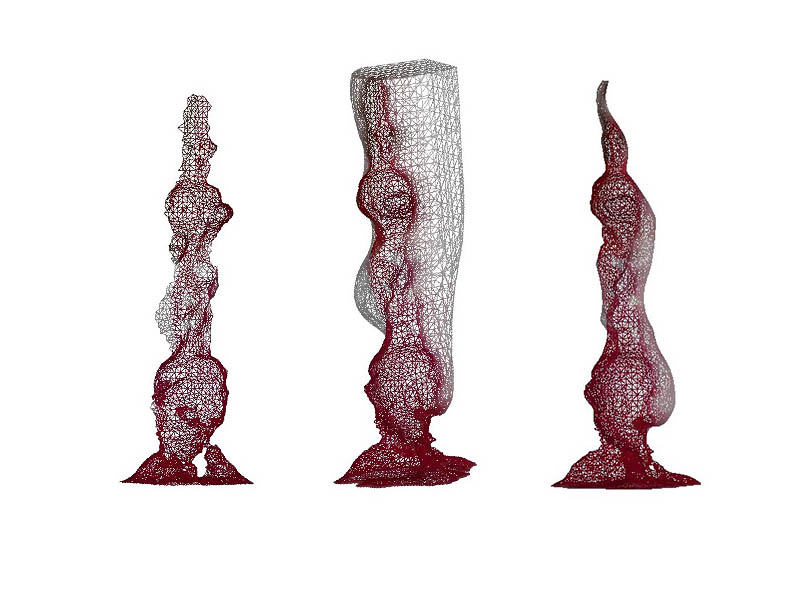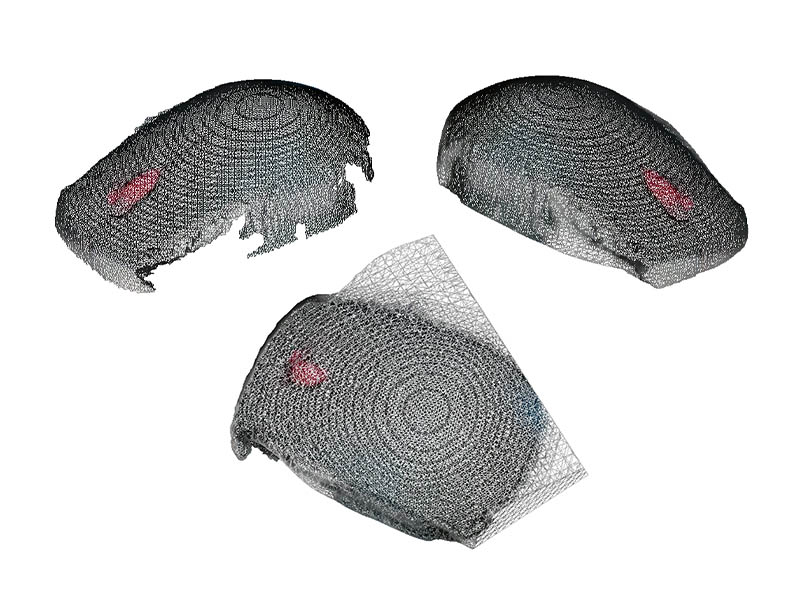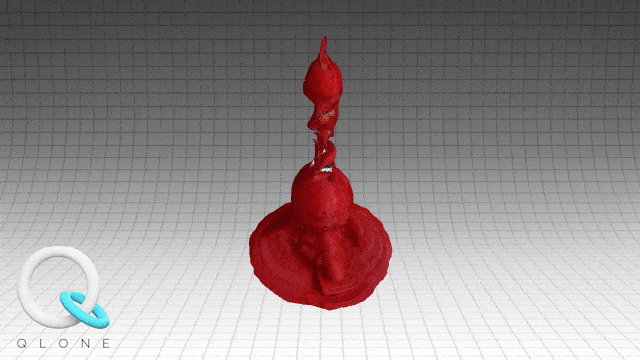3d scanning
In the lab we have the Sense 2 3d scanner by 3d systems. This model is about 5 years old and could be bought around 400 euros (it’s discontinued now). Personally I’m not a big fan of this scanner; it only really works for busts and there are better options available for (a lot) less money now.

I tried scanning objects with my Iphone 8 Plus with the app Qlone. It is free to scan objects using this app; exporting to obj costs about 20 euros for unlimited exports. Although the app has a tendency to give 3d scans a bit of a ‘roof’ and is terrible with hollow objects (like cups), I was quite impressed with the results. You do need to print a grid (file provided by the app) so the scanner has a reference. I’ve printed one of 20x20cm but plan on printing one of 90x90cm later to try scanning larger objects. The small mat can be downloaded here.
Some scans with Qlone:
Comparison
I scanned two objects using both the Sense 2 and the Qlone app with and without mat. I scanned a computer mouse and this 3d printed model.
Sense 2 results
The images below show the 3 steps in the post-processing of the scans. In both cases I had to start over multiple times because the camera lost track constantly. I couldn’t scan half of the model and had to fill in the gaps using the software, which is pretty bad at it.


Below the 3d models.
Qlone app with mat results
Below the results of the Qlone scans.

A side by side comparison of both methods:


Qlone app with cloud processing (without mat)
First attempt failed, probably because of the LED lighting I used (while filming it flickers a lot). Second attempt (on the right)with natural light succeeded, but a lot of the background has been scanned too. I only scanned the tower model with cloud processing, since this method costs cloud credits and I don’t plan on spending more money on this app, especially since I’m not particularly impressed by this new feature yet.